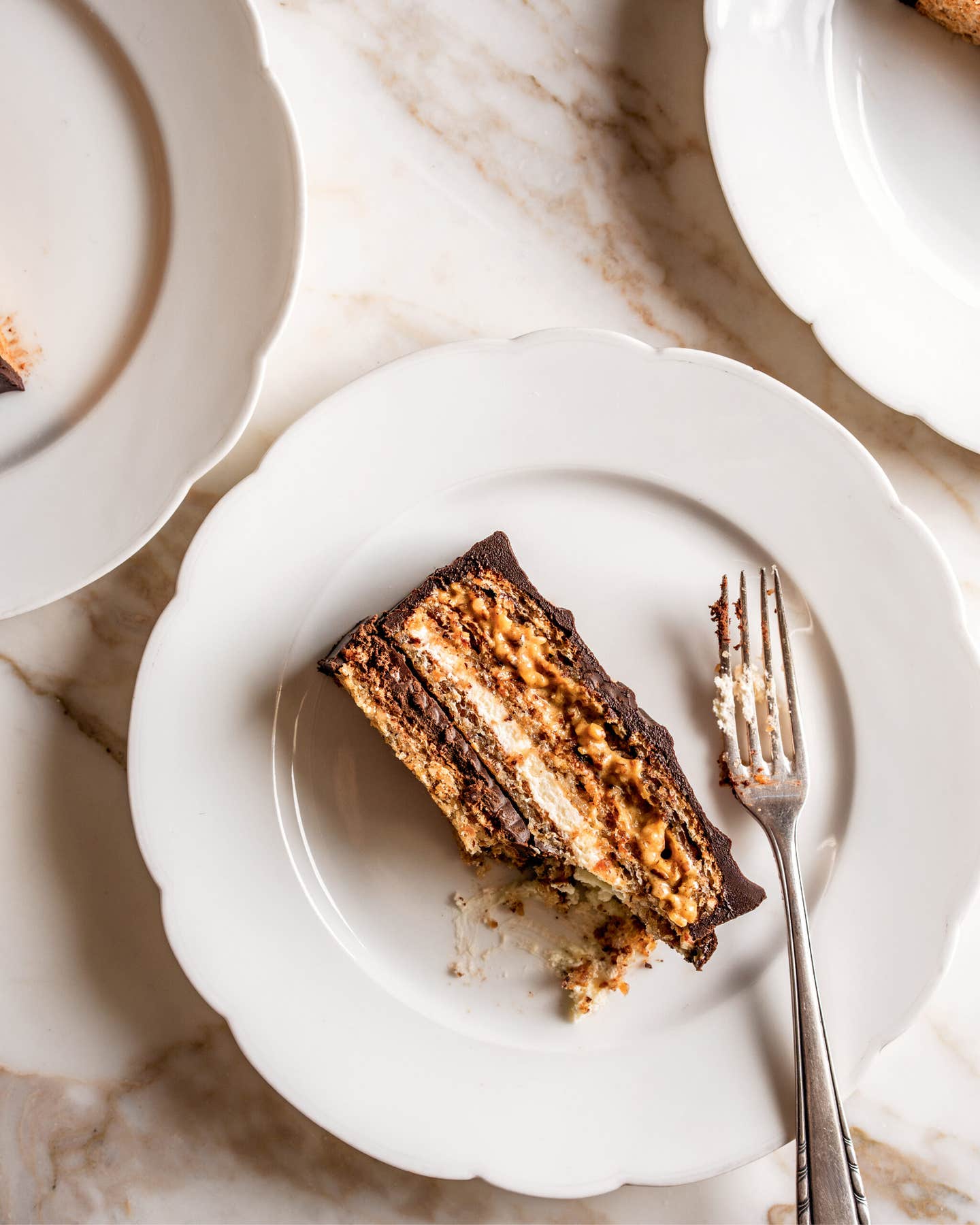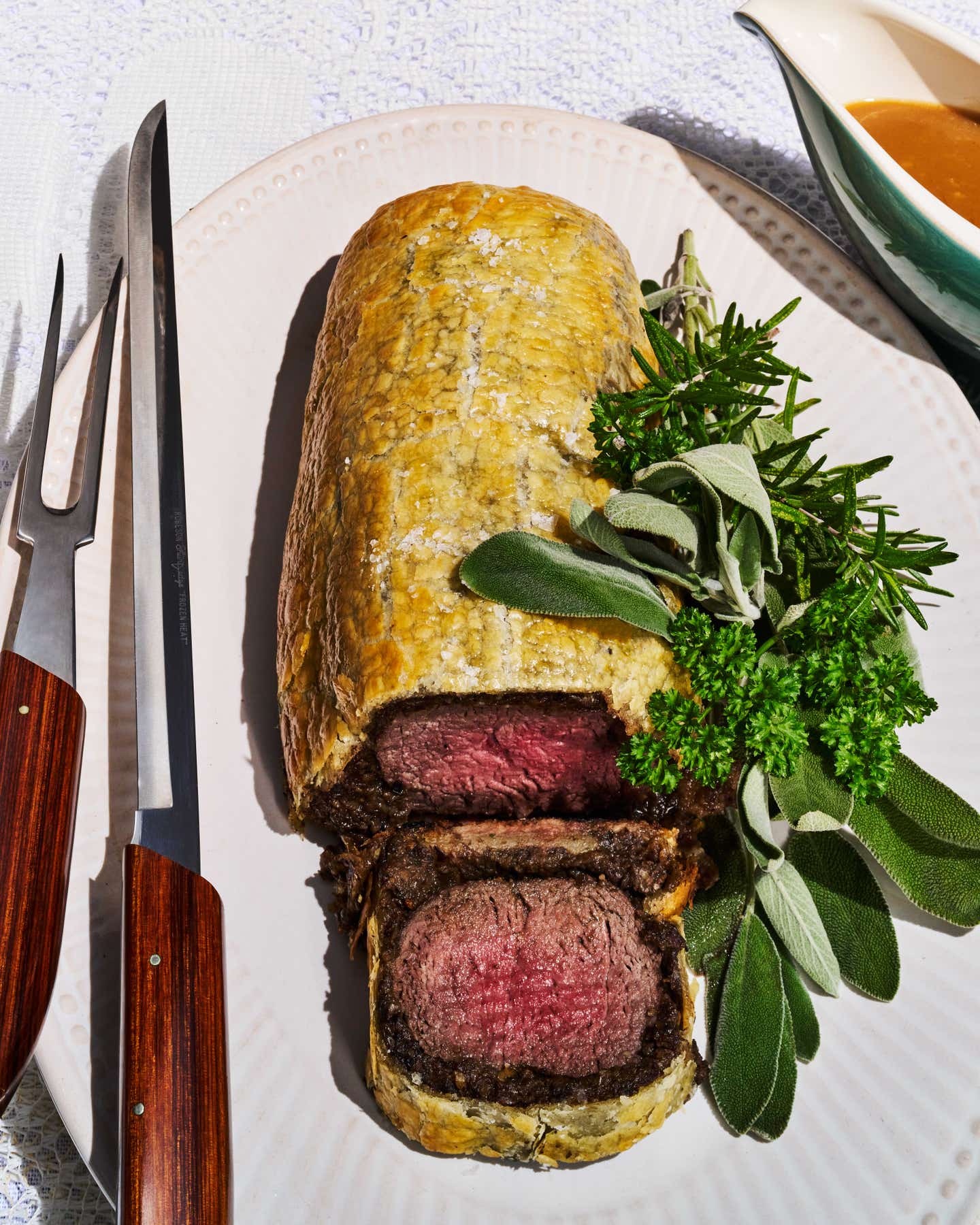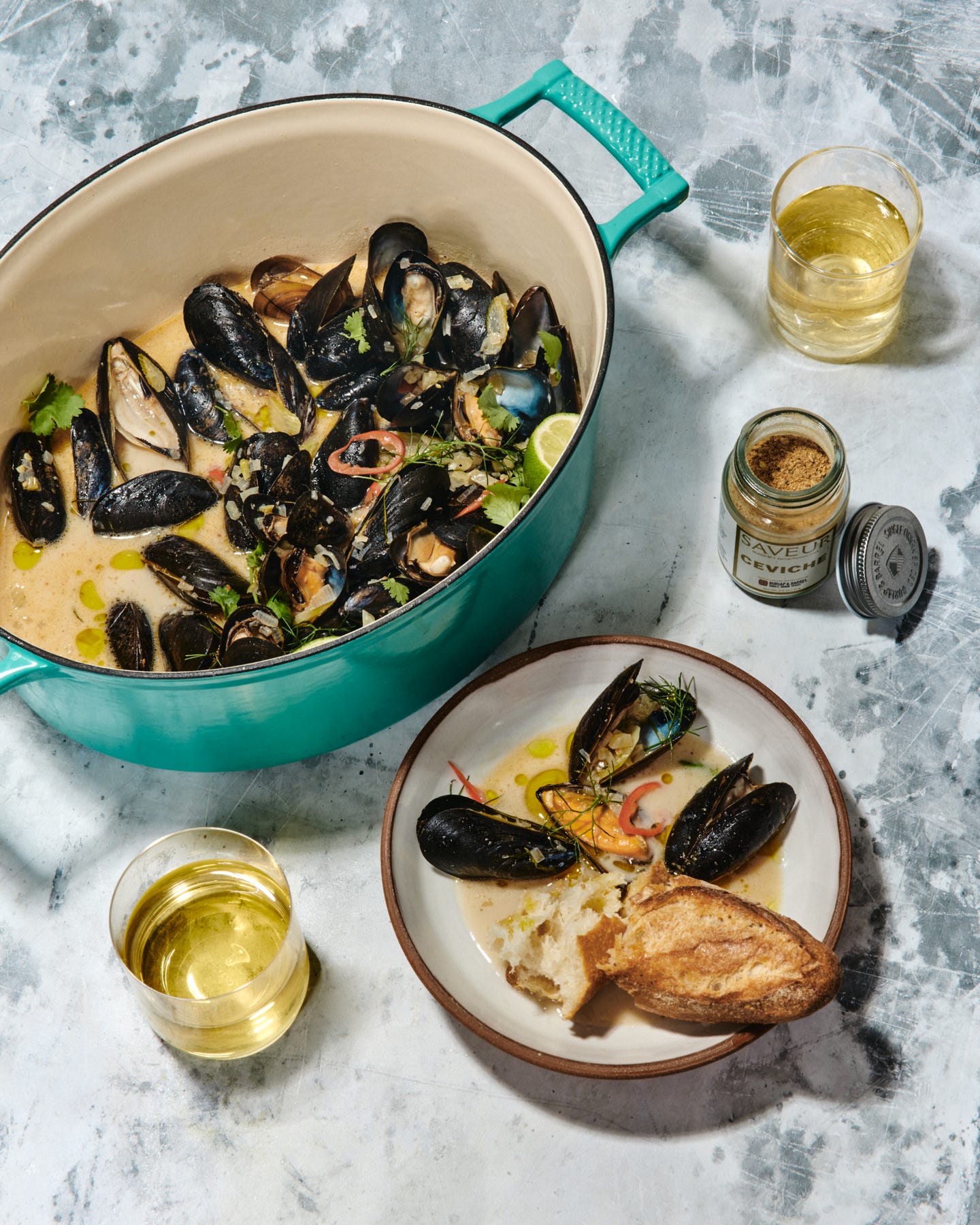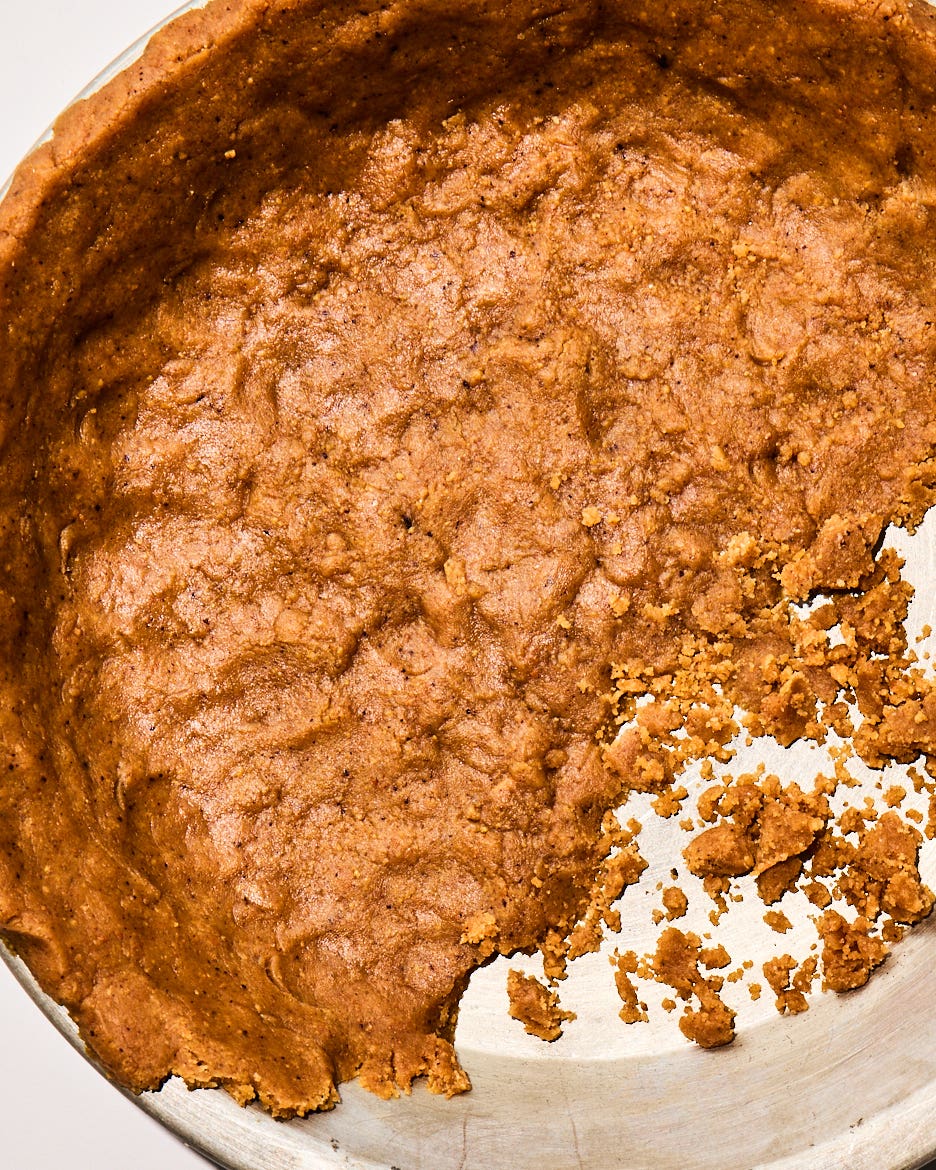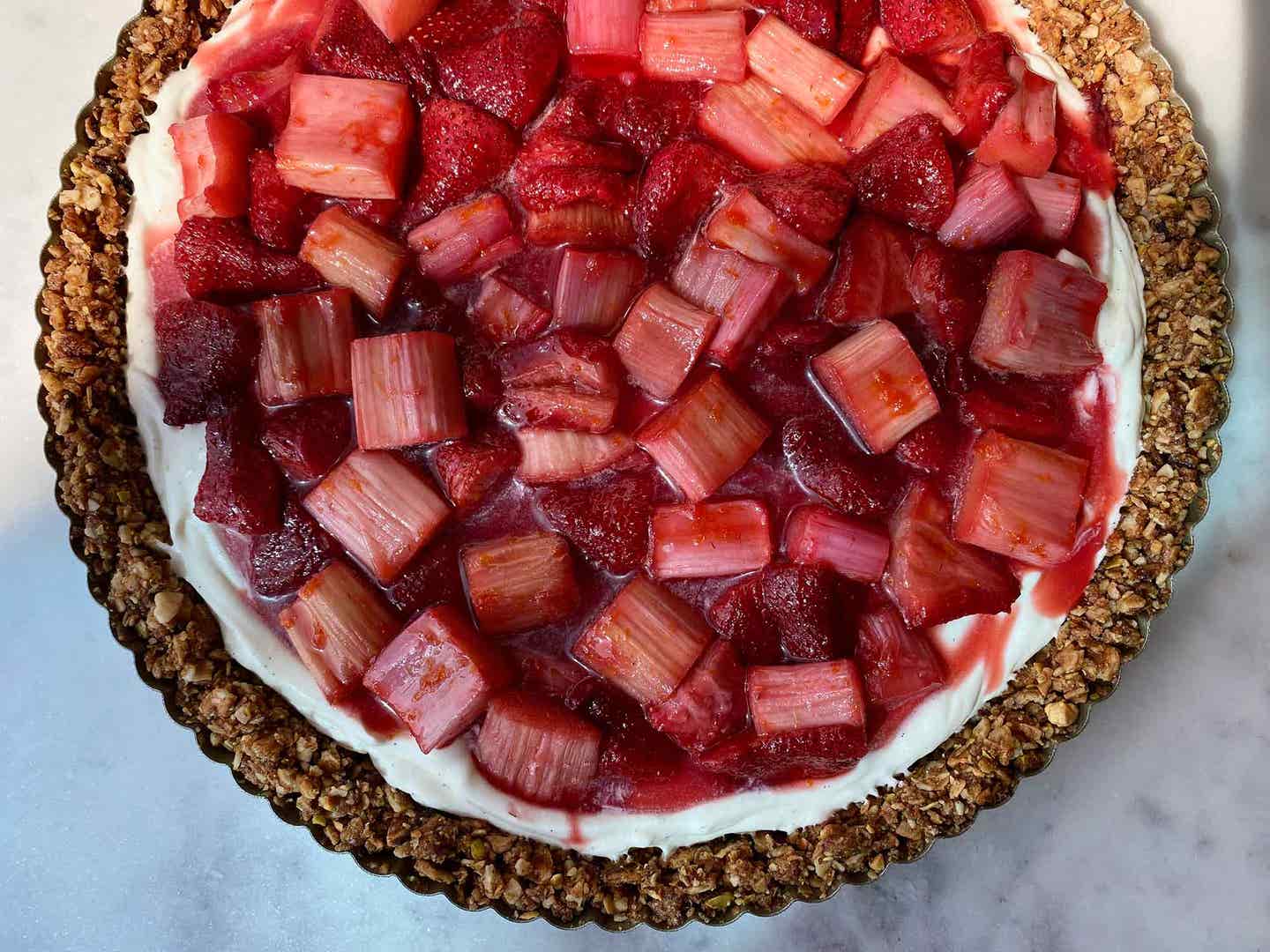
Cue the Compote: Strawberries and Rhubarb Steal the Spotlight in this Passover-worthy Dessert
Spring produce stars in a festive and fruity tart.
If fruit-based desserts were potential teammates for middle school sports, then compote would be the quiet, unassuming kid: never the first, almost always the last picked. Conjuring a cut glass bowl of plump fruit cloaked in syrup, punctuated with cinnamon sticks, a few stray cloves, and curls of lemon peel, fruit compotes might be considered old-fashioned and a touch dowdy. And for those of us who have indelible memories of Passover Seders accompanied by growling stomachs and growing impatience, fruit compote was never our dessert of choice, paling in comparison to Barton’s neon jellied fruit slices. While fruit compote certainly had a keen audience with our parents and grandparents, the true showstoppers of my family’s Seder meal were always the once-a-year treats reserved for Passover.
Steeped in tradition, Passover menus are constantly evolving, embracing various ideologies of Judaic observance. The desserts are needy, sending us to the supermarket for ingredients relegated to the kosher-for-Passover aisle: blue boxes of matzo cake meal, canisters of potato starch, and bags of walnuts. Relying heavily on the alchemy of room-temperature eggs, separated and beaten until light, sponge cake demands tiptoeing across the kitchen floor and prohibits door slamming for fear of a fallen cake. Other common variants of Passover-appropriate desserts include chewy macaroons, more confection than cookie and a veritable blank canvas for embellishment. Flourless chocolate cake has also become a fixture of Seder tables, establishing itself as the “little black dress” of Passover desserts—a reliable, if unadventurous, standby. Looking to create a festive Seder dessert without leaning on flour and leaveners, and indifferent to another low-slung chocolate cake, I turned to my grandmother’s schaum torte and my mother’s favorite compote for inspiration.
Prevalent in many fruit compotes is the sweet, yet oft-maligned prune, confirming that the category is indeed a digestive—a healthy conclusion following a heavy meal. My grandparents appreciated a traditional—if somewhat boring—apple and dried fruit version, but my mother’s recipe was a celebration of spring. Her simple compote of freckled strawberries and rhubarb tasted sweet, tart and sunny. Prepared in her Farberware saucepan, the fragrance of stewed spring fruit announced the end of winter just as vividly as the crocuses and forsythia blooming outside the dining room window. In my mind, strawberry and rhubarb are flavors intrinsically linked to Passover.
Get the recipe for Roasted Strawberry-Rhubarb Tart with Mascarpone Cream »
Recipes for baked, poached, preserved, and stewed fruit have been documented throughout history. Early cookbooks such as The Queens Closet Opened, published in 1655 and written by an author known only as “W.M.,” and The Compleat Confectioner, written by Hannah Glasse in 1762, feature preserved fruits, among them recipes for a “Compote of Pears” and “Morella Cherries in Brandy.” Both fresh and dried fruits can benefit from gentle cooking, a simple means of intensifying and enhancing flavors. Fresh-yet-tired fruit (sometimes referred to as “soft but lovable” in commercial kitchens) can shine when prepared with little more than a sweetened syrup. Baked apples, stewed plums, spiced peaches, poached pears, and glazed apricots also fall under the canopy of compotes and oven-baked fruit.
Derived from the Latin compositum, compote means, simply, mixture. Unlike jams and preserves, compote is made by simmering fruit in sweetened liquid or wine, then cooling it in its own cooking syrup. This method of enhancing and preserving fruit is common throughout the world, distinguished by regional flavors and ingredients. Identifying fruit with abundance, celebration, and seasonality is universal.
Eastern European recipes for fruit compotes were often a simple way to soften dried fruits into a juicy, honeyed condiment. As spices became more widely available, they too were added to the mix. Easily prepared, dairy-free, and made with readily available, inexpensive, and shelf-stable ingredients, the appeal of the compote spread within Jewish communities. In the 19th century, compotes became customary among the Ashkenazi Jews, people descended from the Jewish population of Central and Eastern Europe. Today, the dish remains a culinary fixture of Jewish culture.
Facing a week long on matzoh and short on leavening encourages inspiration. Rhubarb, the elusive harbinger of spring, pairs with strawberries in an oven-roasted compote that I like to tuck into a crunchy, matzo-based tart shell. (For those abstaining from animal products, substituting a thin layer of kosher-for-Passover strawberry jam for the cream filling and swapping out a vegan butter substitute for the butter in the crust makes the dessert both dairy- and egg-free.)
Rhubarb’s notoriously high water content calls for a little potato starch to tame runaway juices. Further reducing the roasting syrup enhances the taste without over-sweetening and, along with a shot of sugar and citrus, encourages the thickening that transforms the compote into a sliceable filling. The tart can be prepared in advance, freeing you to unearth the Maxwell House Haggadahs and iron the good tablecloth. And don’t worry about getting a forkful of rhubarb on the white damask; chances are a glass of wine will get there first.
Keep Reading
Continue to Next Story
